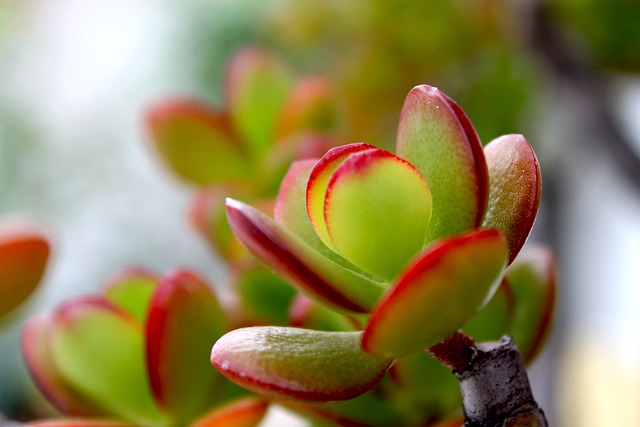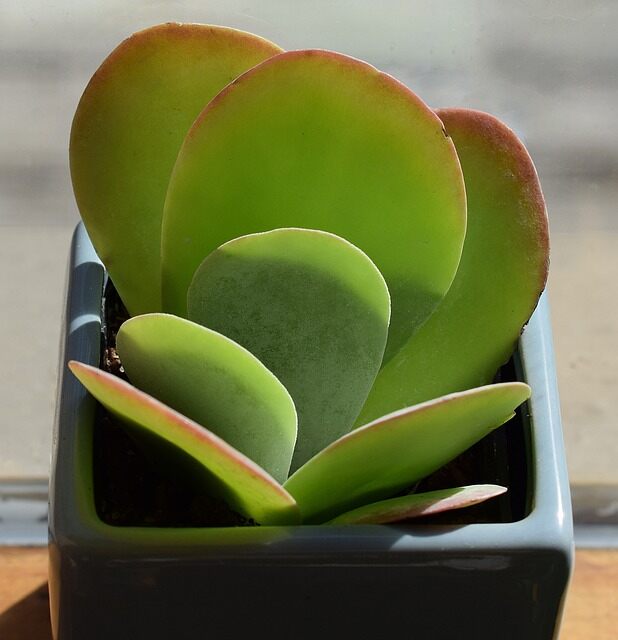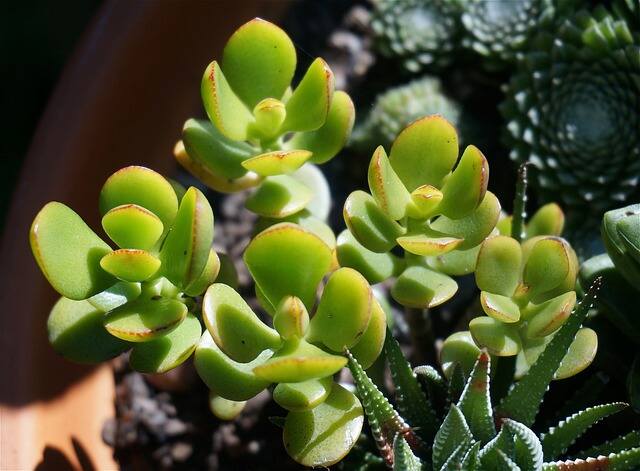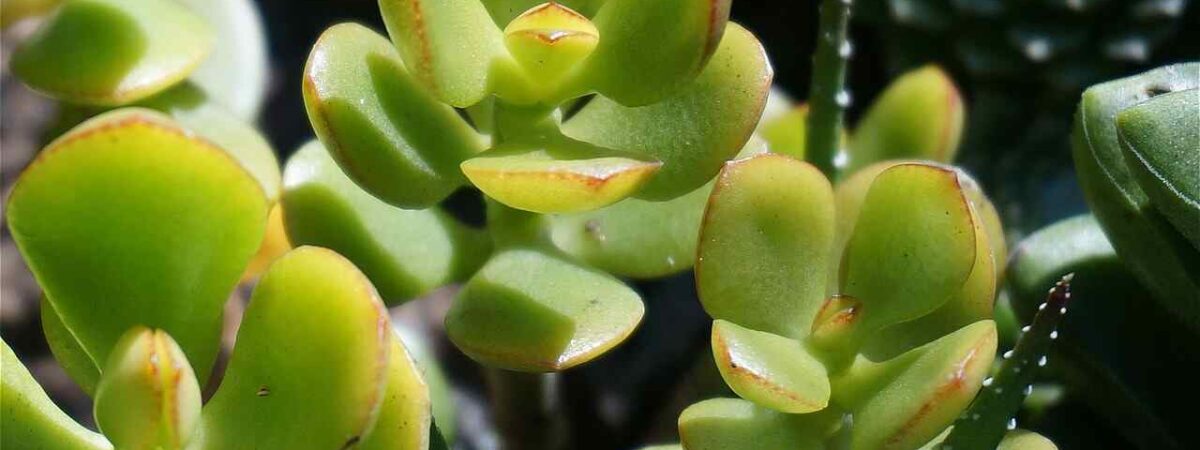Do you want to grow an indoor succulent plant family that displays surprising evergreen leafage as well? Do you want an attractive succulent to show up in more and more places and increase the very trendy ornamental value of your home?
Then why don’t you go for a crassula succulent?
Dive into the article below to findout more about the crassula succulent and its growing and caring guide.
Plant Overview

Crassula is an indoor succulent that belongs to the family of stonecrop family (Crassulaceae). These succulents are very attractive plants along with very thick, fleshy leaves or stems, which are used to store water and protect the plants from drought situations.
Just like the echeveria plants, crassula succulents also come in a variety of shapes and sizes which are all relatively low-maintenance. In today’s world, you can find crassula succulent all over the world. However, most of the cultivated varieties of this succulent generally belong to the Eastern Cape of South Africa.
Similar to other houseplants, crassula also requires warm, sunny environments along with moist but well-draining soil.
Types of Crassula

There are a lot of varieties, species, and cultivars of crassula found on the earth to choose from. Along with the standard jade plant cultivars (Crassula ovata), below is a list of a few others that may draw your attention
Crassula ‘Morgan’s Beauty’
The Crassula morgan beauty is a popular hybrid cultivar that bears silver leaves which are dusted in white, with pretty pink late spring flowers. This plant attains a size of 4 inches tall.
Crassula erosula ‘Campfire’
This crassula variety is popularly known for its long-branching lime leaves that usually turn blazing red in winter. This plant is a clumping plant that grows up to 4 to 8 inches tall and spreads up to 3 feet wide.
Crassula pellucida variegata
This popular crassula species showcases a flowing mass that bears heart-shaped leaves variegated in pink, green, and creamy yellow flowers.
Crassula perforata
Also popularly recognized as the stacked crassula, this plant bears leaves that circle around a central stem. Thus it is sometimes referred to as a string of buttons.
Crassula arborescens
With the common name of Chinese jade or silver dollar jade, this species of crassula has rounded blue-gray leaves along with maroon edges. This variant grows as an attractive multi-stemmed shrub, with a height of 4 feet tall.
Crassula muscosa
Being referred to as watch chain, rattail crassula, or zipper plant, this variant possesses small light green leaves that provide the stems of the plant a rough, corrugated look.
Crassula capitella
There are a lot of subspecies of this plant, all of which bear green leaves which develop strong reddish colors in the sunlight. They are relatively small plants among all the variants usually biennial. This plant is not commonly grown as a houseplant.
How to care for crassula succulent?

Light
Usually, most crassula succulents need some shade in the hottest part of summer to grow. However, they may require bright and indirect light to thrive and attain their most vibrant color. When you are growing the crassula succulent outdoors, you should choose a site that gets morning sun and afternoon shade is perfect.
If you are placing your succulent in full sun all day, the leaves of that may scald. While growing indoors, make sure to place your plants in a spot that receives bright and indirect light all day, or bright and direct sun at most for six hours of the day. A southern-facing window may be ideal for your plant.
Soil
Crassula plants thrive well in sandy and well-draining soil. These plants will do best when they are grown in sandy, rocky blends which are formulated specifically for succulents.
These plants prefer to grow in neutral to slightly acidic soil, but extreme pH levels rarely may kill the plant. These plants will react badly and show signs of root rot when they are grown in boggy, wet soils.
Water
The crassula succulent thrives to grow in sparse watering as a general rule of thumb. These plants can’t grow in overwatering. So it is recommended not to overwater the plant, soak the plant, allow the water to drain completely, and then wait for your soil to dry out completely before watering again.
During winter days, you can reduce watering, as the roots of the plant may rot in cold, wet soil. These crassula plants start actively growing in the spring specifically, so look after them for a slight increase in their watering needs.
When you are growing your plants indoors, you can minimize the water from late fall through winter, as the plants may go semi-dormant during this period.
Temperature and Humidity
The Crassula plants are generally grown outdoors as perennial plants from zones 10 through 12, but sometimes you may need to bring them indoors during winter days or you can grow them as a houseplant.
Some species of the crassula are able to tolerate a mild frost, but temperatures should be below 30 degrees Fahrenheit may kill off the plant. All the species of these succulents prefer to grow in humidity, but they can also survive nicely in very humid climates.
Fertilizer
It is suggested to feed your crassula plants sparingly. You can give your plant a little organic fertilizer as per the mentions on the label which is good for succulents. It is recommended to fertilize your plant in summer when they start growing, but it is necessary to further feed your plant.
How to Propagate Crassula

Crassula plants can be propagated easily. Below is the process to grow many new plant over time.
Cut a leaf or stem from a crassula
To propagate your plant, you need only to divide the offsets of the crassula. All you need to propagate your plant is a detached leaf or stem cuttings.
Let a callus form
Before you are taking your cutting and plunge it into some soil to grow, allow a callus to form on the cut edge of the stem of your plant or succulent leaf. Calluses provide your plant with some growing points for new roots and prevent your succulent from soaking up too much water.
Choose a clay pot to grow
It is recommended to place your stem cutting or callus in a porous clay or terracotta pot that has drainage holes from the beginning. It will help your succulent to minimize the risk of overwatering.
Your crassula cutting will need regular watering and moisture in its early days, however, you can water it less as it matures.
Place the cutting in a pot of damp soil
Once the callus of the plant has formed, fill up your clay pot along with damp soil, and place the leaf or stem cutting into the soil.
Keep the soil moist in the early stages
While your crassula succulent matures, they may not need constantly moist soil, so the potting mix of soil will always feel damp to the touch until the new plants establish themselves.
Conclusion

With the resurgence of container gardening of various succulents, different small species of crassula is becoming more readily available, and the easy-to-grow habit makes these plants worth getting to know.
Undoubtedly, crassula is one of the perfect container plants that require low maintenance, and always remains evergreen, and eye-catching.
So what are you waiting for?
Add this succulent to your indoor garden attire and let us know how it is going.
You may also like to read
How to grow and care for Donkey’s tail succulent? – A detailed guide






